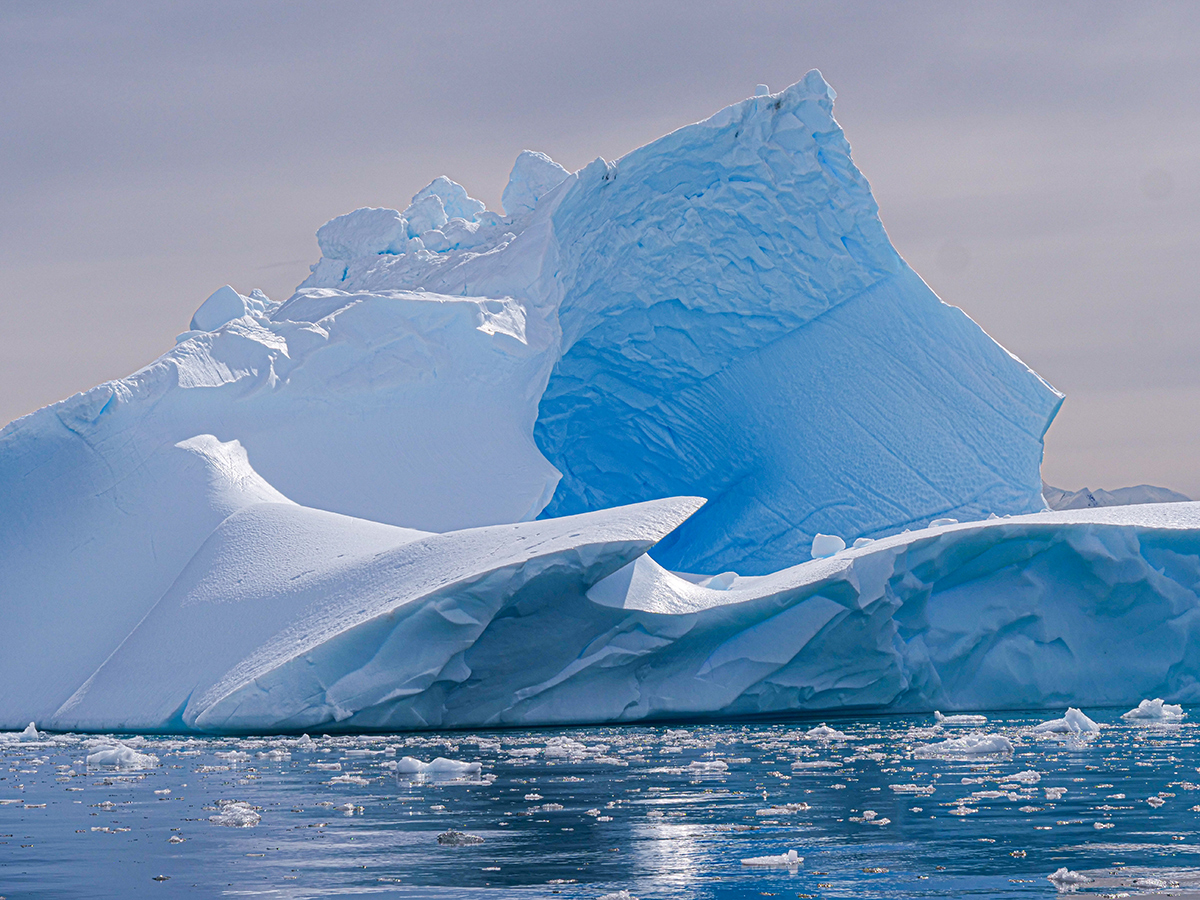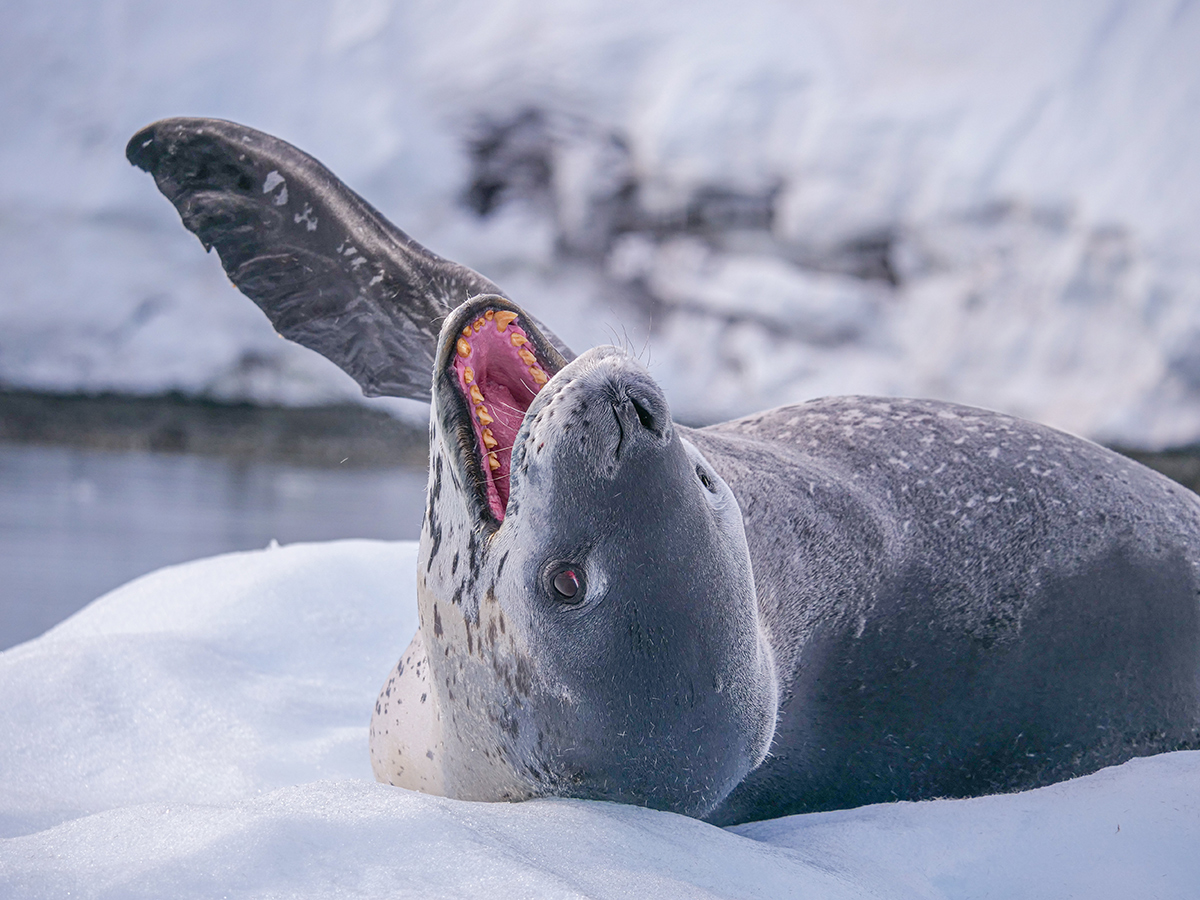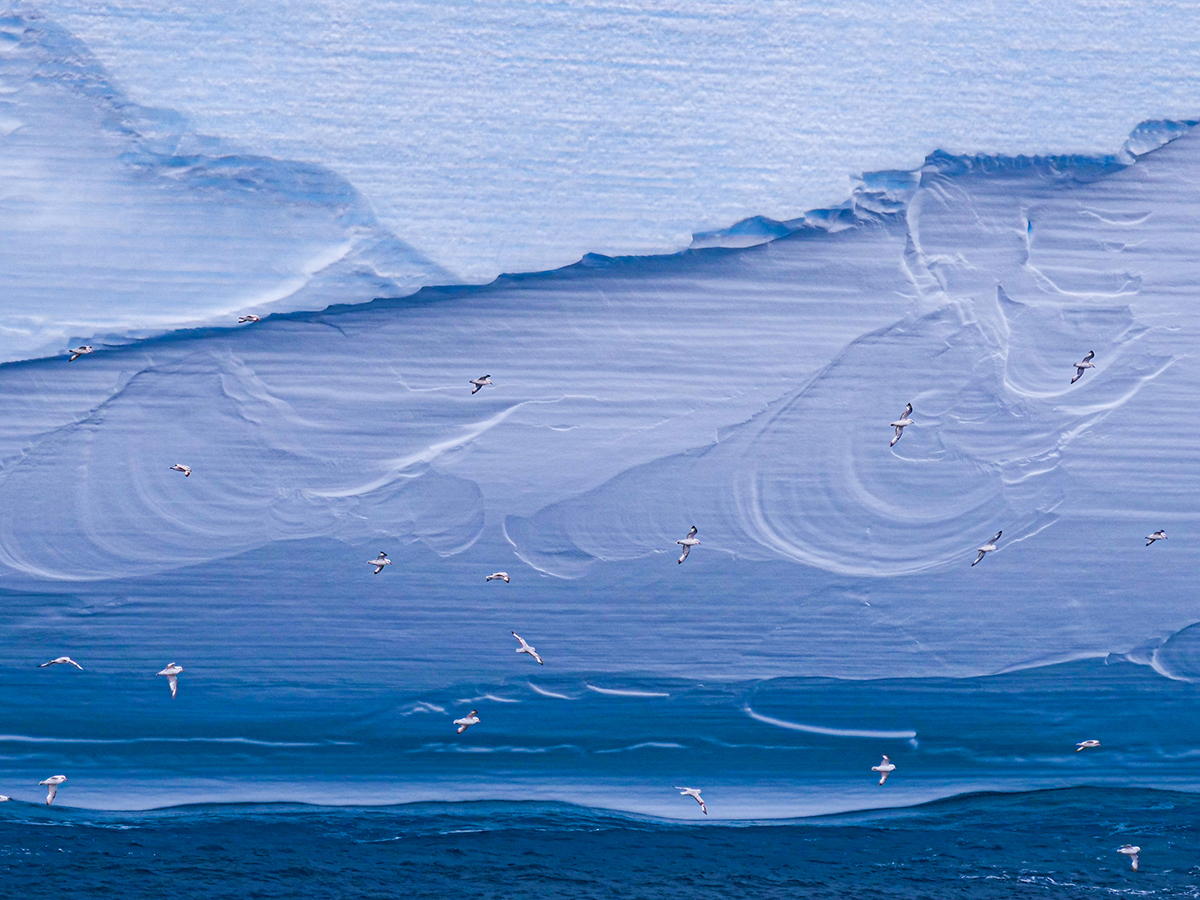
My career with National Geographic has taken me to more than 150 countries over the years. I’m fortunate to have worked on every continent…but I may have saved the best for last! A recent trip to Antarctica and South Georgia Island was one of the most wonderful adventures of my photographic life. It exceeded all my expectations.
We left the southern tip of South America on a beautiful ship with an impressive group of naturalists. After nights at sea, we woke to the sight of icebergs the size of pyramids floating past our ship. What began as white on white became a world of blue. The sea reflected the sky and together they painted the ice a thousand shades of azure. The joy of composing beautiful images in a limited palette reminded me of the years that I worked in black and white and a million shades of gray.
Antarctica is a compositional wonderland of vast scenes and abstract details and textures.Flocks of prions circle gigantic icebergs. Exquisite albatross soar and dive, daring photographers to try and capture their flight. Wildlife on this isolated continent is both abundant and rare. The thriving colonies of penguins and seals are a testament to global conservation efforts in the region. Rats and other rodents have been eradicated, allowing nesting birds to thrive. There were days when I simply could not believe the magnitude of what I was seeing.
On land, there are gatherings of penguins so large that it takes your breath away. These colonies are a world of fearless, molting birds and a photographer can get close enough to explore compositions made up entirely of feathers. I marveled at the beauty of the king penguins whose unforgettable plumage provided endless abstract patterns. As with human communities, I watched for moments of interaction among the birds. Chicks pestered their mothers for food, adults preened and waddled in and out of the sea. It was marvelous to see how these penguins, who move so comically on land, become elegant as soon as they enter the water. Penguins spend most of their lives at sea, so we would come across leaping groups far from land.
Other species are more elusive, so we would spend hours scanning the sea for a spout. Then, suddenly, there were whales: one, a pair, then dozens! One pod of orcas spent 15 minutes flirting with our ship, cruising back and forth and even under our vessel. When a photographer is blessed with such an opportunity, it’s important to stay calm and look for new and creative ways to make images of the animals. My favorite shots were those that showed the whales just below the surface of the sea, as ghost-like apparitions. The ability of the Lumix system’s fantastic auto-focus and exquisite sharpness to capture these images was thrilling.

Annie Griffiths
Annie is a Global Ambassador for Lumix Cameras. One of the first women photographers to work for National Geographic, Annie has worked on dozens of magazine and book projects for National Geographic, including stories on Lawrence of Arabia, Galilee, Petra, Sydney, and Jerusalem.
In addition to her magazine work, Griffiths is deeply committed to photographing for aid organizations around the world. She is the Founder of Ripple Effect Images, a collective of photographers who document aid programs that are empowering women and girls in the developing world. In just six years, Ripple’s work has helped 26 non-profits raise over ten million dollars.
Griffiths has published 4 books, is an accomplished speaker and a regular television and radio guest. She has received awards from the National Press Photographers Association, the National Organization of Women, and the White House News Photographers Association.









